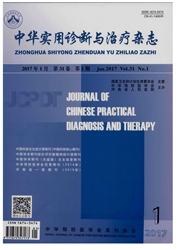

 中文摘要:
中文摘要:
目的:应用聚氰基丙烯酸丁酯纳米粒介导或者寡核苷酸直接转染技术,研究聚氰基丙烯酸丁酯纳米粒介导下端粒酶逆转录酶反义寡核苷酸对A549细胞的转染,探讨聚氰基丙烯酸丁酯纳米粒对A549细胞摄入寡核苷酸的影响。方法:利用5’端FITC标记的反义寡核苷酸,以聚氰基丙烯酸丁酯纳米粒介导FASODN(FASODN—NP)或FASODN直接转染A549细胞,流式细胞仪测定细胞的胞内平均荧光强度,荧光显微镜观察细胞内荧光物质的分布。结果:转染24h后,与空白对照组和FASODN组相比,FASODN—NP组胞内荧光强度明显增加(P〈O.01)。结论:聚氰基丙烯酸丁酯纳米粒介导能有效提高A549细胞对端粒酶逆转录酶反义寡核苷酸的摄入。
 英文摘要:
英文摘要:
Objective To investigate the transfection of antisense oligodeoxynucleotide of human telomerase reverse transcriptase mRNA on A549 cells by cationic polybutylcyanoacrylate nanoparticles or not. Methods The cationic nanoparticles were prepared by an emulsion polymerization process in the presence of DEAE-Dextran. Antisense oligodeoxynucleotides were loaded on the particles by adsorption. Antisense oligodeoxynucleotide conjugated with fluorescent 5'-isothiocyananate (FASODN), Intracellular fluorescence intensity after transfecting fluorescent 5'-isothiocyananate was detected by flow cytometry. The cellular distribution was observed by fluorescence microscopy. Results The intracellular fluorescence in FASODN-NP group was obviously stronger than in FASODN group (nanoparticles free) after transfection for 24 hours (P〈0.01). Conclusion Nanoparticles can increase the amount of human telomerase reverse transcriptase antisense oligodeoxynucleotide uptaken by A549 cells obviously.
 同期刊论文项目
同期刊论文项目
 同项目期刊论文
同项目期刊论文
 期刊信息
期刊信息
